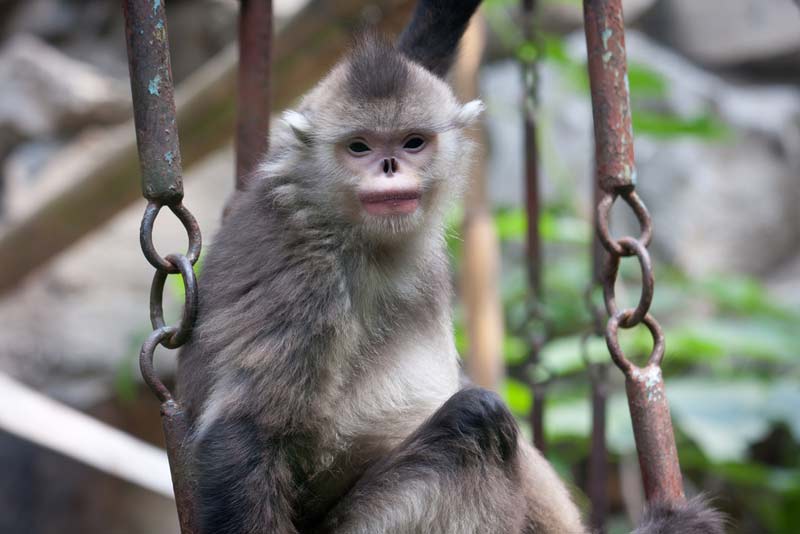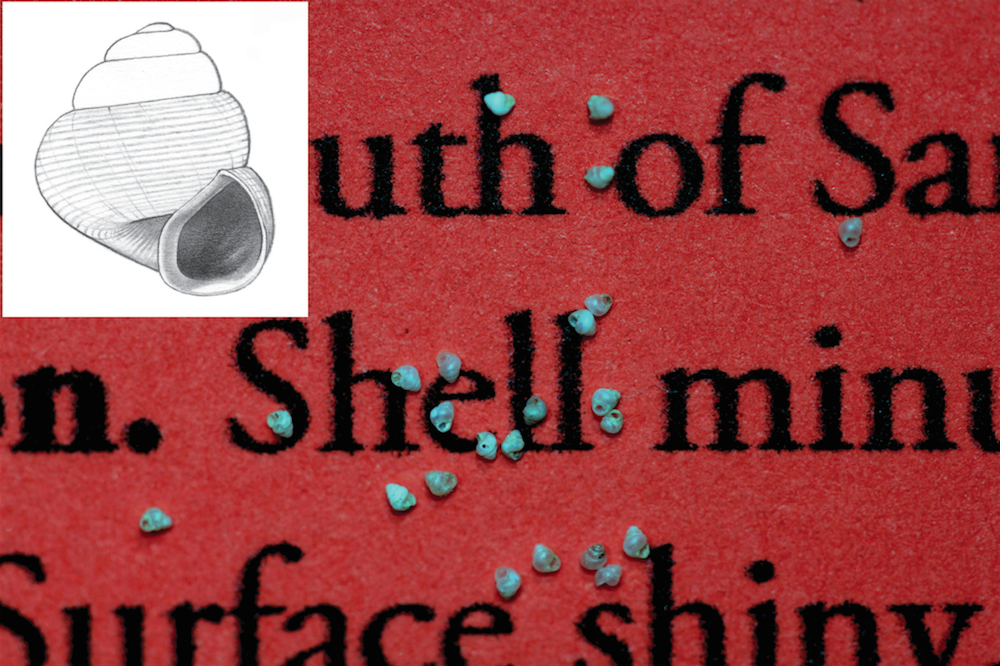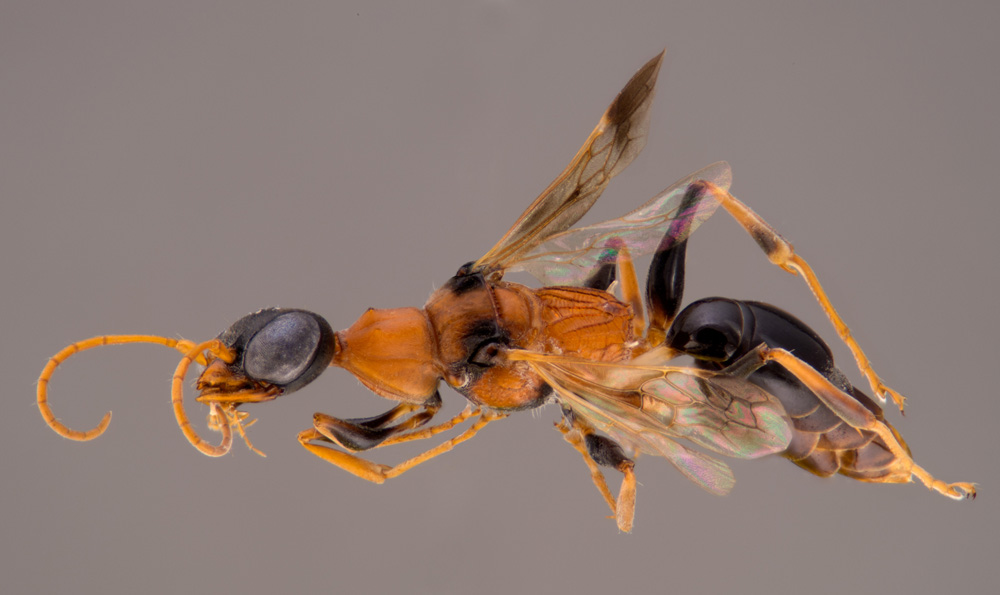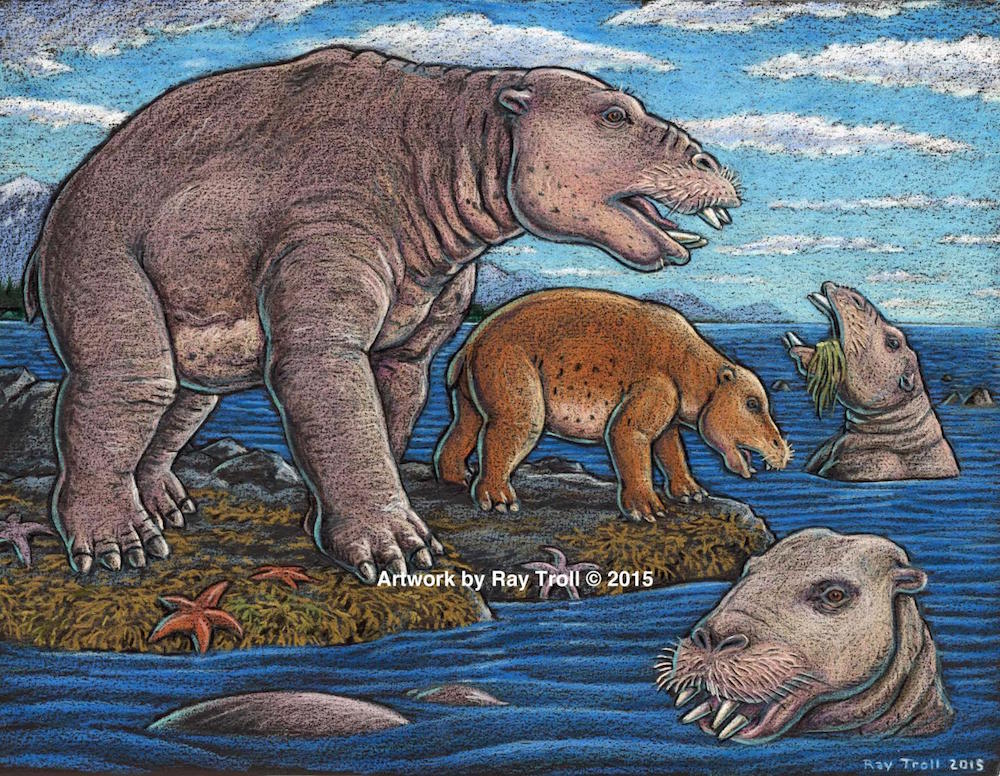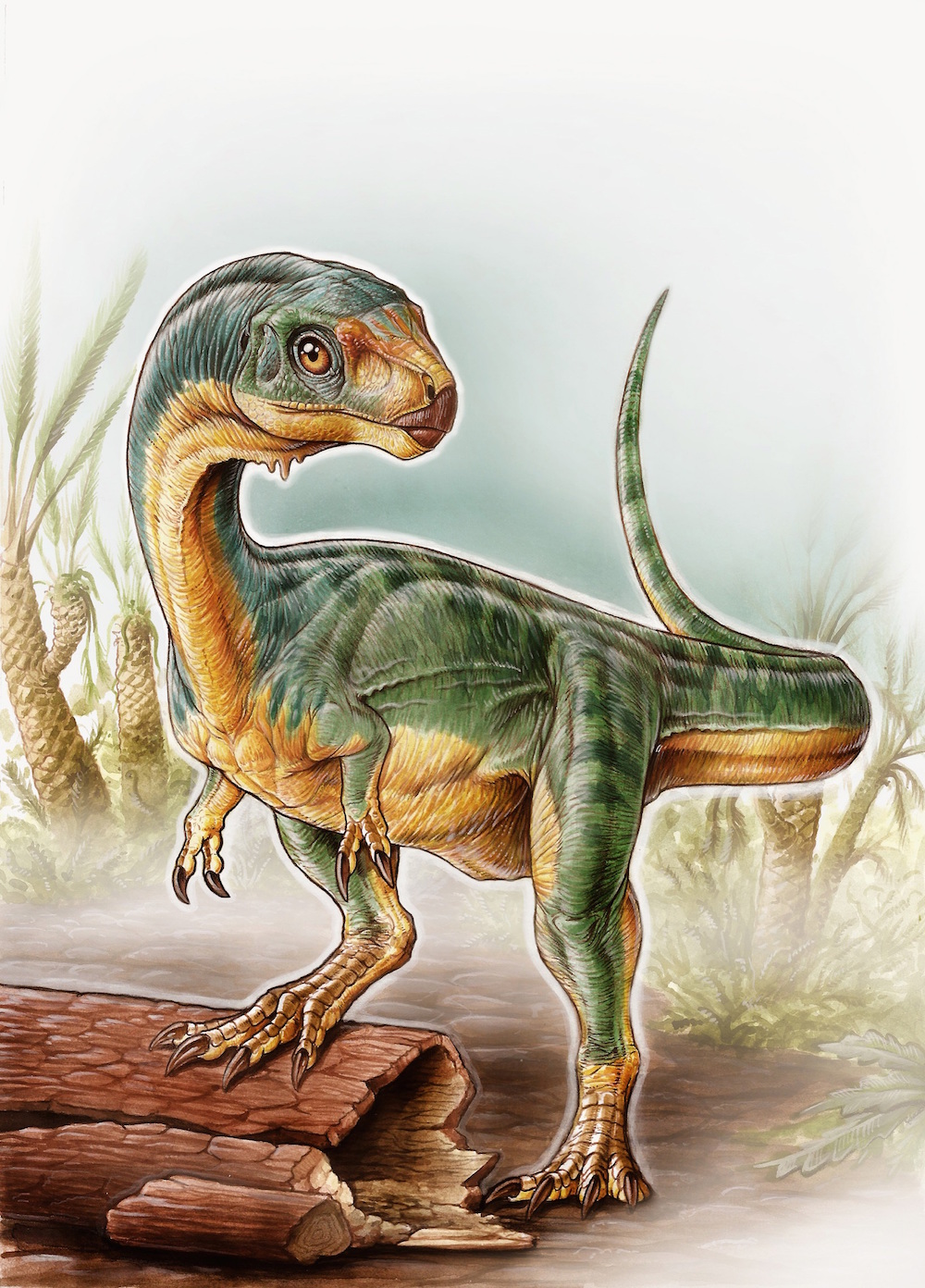The 10 Strangest Animal Discoveries of 2015
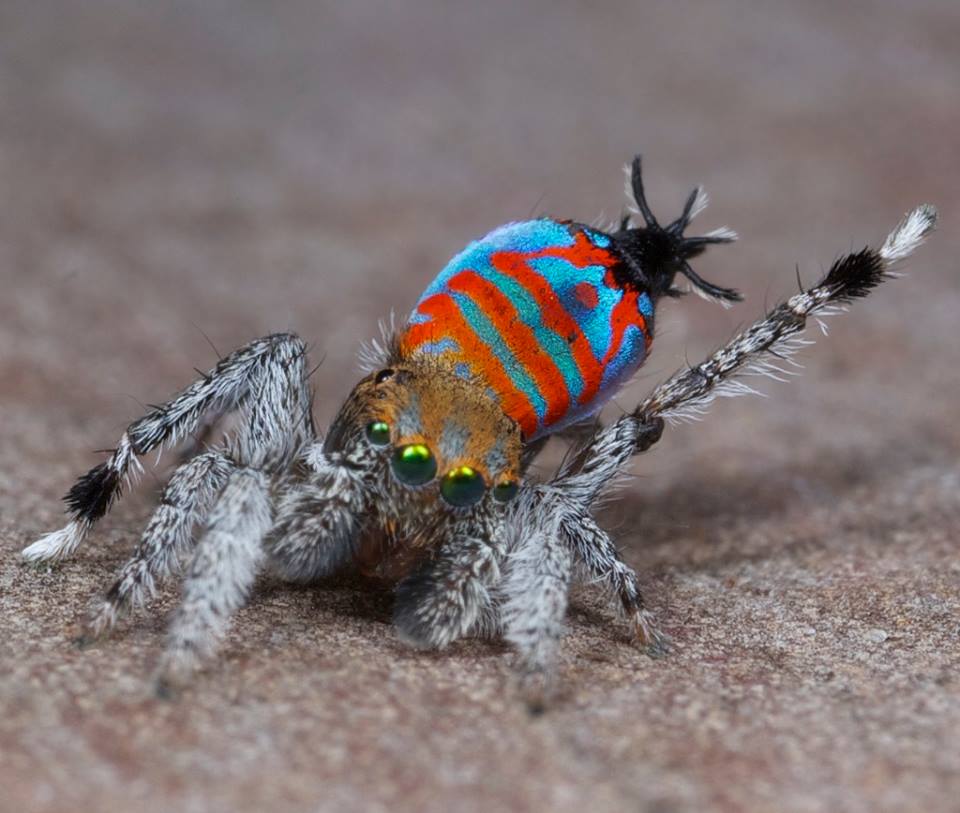
Every year, scientists wade into jungles, deserts and museum collections to examine animals and, if they're lucky, discover a new species.
For instance, in 2015 researchers identified a ruby-red sea dragon off the coast of Australia, a new species of giant tortoise in the Galápagos Islands and an ancient spikey worm with 30 legs in China. As these newfound creatures are uncovered, it's important to protect them from pollution, habitat loss and the havoc caused by invasive species, especially as Earth enters its sixth mass extinction, experts say.
In the meantime, scientists are busy learning about these new animals, and whether these critters can inspire new materials, robots and medicines. Here's a look at 10 newly identified ─ and exceptionally strange ─ animals, both living and extinct. [101 Animal Shots You'll Go Wild Over]
1. Sneezing monkeys
"Snubby," the sneezing monkey, is nicknamed for its upturned nose that collects rainwater on wet days. The unusual white-and-black monkey lives in northern Myanmar, and can be heard sneezing off its "nose puddles" when it rains.
But the animal has a trick up its sleeve (or should we say nose?). It often tucks its head between its knees when it rains, so it won't spend all its time sneezing, according to the World Wildlife Fund (WWF).
Researchers announced the sneezing monkey (Rhinopithecus) to the world in 2010, but it's one of 211 new species discovered in the eastern Himalayas between 2009 and 2014, according to a new 2015 WWF report.
Get the world’s most fascinating discoveries delivered straight to your inbox.
2. Smallest snail on Earth
A tiny snail in Borneo edged out a species in China for title of world's smallest snail. The teeny champion (Acmella nana) has a shiny, translucent white shell that measures about 0.027 inches (0.7 millimeters) tall, and it lives on limestone hills on the tropical island.
The pipsqueak is so small, researchers couldn't see it with their naked eyes in the wild. So they took a few shovels of dirt from the tropical rainforest and looked at the contents under a microscope. A. nana likely feeds on films of bacteria and fungi that grow on wet limestone, they told Live Science in November.
The tiny mollusk is one of 48 snail species the researchers identified in the study.
3. Terror Bird
Want to be terrified? Imagine a 10-foot-tall (3 meters) flightless bird chasing prey with its hooked beak. These giants, aptly named terror birds, lived in South America from about 50 million to 1.8 million years ago, and likely sent any animal they chased into a stricken panic.
In April, researchers announced they had discovered a new species of terror bird (Llallawavis scagliai) off the eastern coast of Argentina. The 3.5-million-year-old specimen is the most complete terror bird fossil on record, with about 90 percent of its bones intact.
An analysis of its inner ear structures suggests L. scagliai heard low-frequency sounds, meaning it could hear the low rumble of its prey's footsteps hitting the ground from far away, the researchers told Live Science in April.
4. Dementor Wasp
Researchers named a newfound wasp Ampulex dementor, or "dementor wasp" for short: The name was inspired by Harry Potter's dementors, ghostlike creatures that suck away a person's happy thoughts (and soul, if they're feeling ravenous). [See Photos of Other Newly Discovered, But Weird Species]
The wasp eats cockroaches in an impressively scary way. It injects venom into the cockroach's belly, turning its prey into an immobile "passive zombie," the researchers told Live Science in May. But the venom doesn't actually kill it, meaning the cockroach gets eaten alive by the dementor wasp afterward.
5. Hippo-size vacuum cleaner
It might not help clean the living room, but about 23 million years ago a hippo-size mammal used its long snout as a vacuum cleaner, suctioning up tasty morsels of marine algae and sea grass along the coast.
The newly identified extinct animal (Ounalashkastylus tomidai) belongs to the order Desmostylia, the only known order of marine mammals to go completely extinct, the researchers told Live Science in October.
The scientists found four O. tomidai skeletons, including one baby, on the Aleutian Islands' Unalaska.
"The baby tells us they had a breeding population up there," said study co-author Louis Jacobs, a vertebrate paleontologist at Southern Methodist University in Texas. "They must have stayed in sheltered areas to protect the young from surf and currents."
6. "Skeletorus" and "Sparklemuffin"
It's worth overcoming arachnophobia to get a good look at these two beauties, endearingly dubbed "Skeletorus" and "Sparklemuffin."
Both are peacock spiders, named for their bright colors and dancelike courtship rituals, Live Science reported in February.
Skeletorus (Maratus sceletus) looks like a cartoon skeleton with its black-and-white markings, whereas Sparklemuffin (Maratus jactatus) has red-and-blue coloring. Both are found in Australia, and showcase the diversity (and colors) of the peacock spider group. [See More Photos of Gorgeous Peacock Spiders]
7. Enormous sea scorpion
Iowa has a lot more than cornfields. During an excavation of an ancient meteorite impact crater in the Upper Iowa River, researchers uncovered the fossilized remains of human-size sea scorpions with both pointy and paddle-shaped limbs.
The sea scorpions (Pentecopterus decorahensis) likely ate bivalves and squishy eel-like creatures during their day, about 460 million years ago, the researchers told Live Science in September.
P. decorahensis are ancient arthropods that are closely related to horseshoe crabs and arachnids, making it an incredibly ancient relative of Skeletorus and Sparklemuffin.
8. Four-legged snake
Modern snakes slither around on their bellies, but 120 million years ago their ancestors sported four feet, each with five digits. [Photos: Weird 4-Legged Snake Was Transitional Creature]
The new species was serendipitously discovered in a museum exhibit of fossils from the Crato Formation in northeastern Brazil. The Solnhofen Museum in Germany had labeled it "Unknown fossil," but David Martill, a paleobiologist at the University of Portsmouth in the United Kingdom, gave it a long look. His jaw dropped when he realized it had four legs, Martill told Live Science in July.
Researchers named the 7.8-inch-long (20 centimeters) snake Tetrapodophis amplectus, literally, four-legged snake.
9. Pig-nosed rat with vampire teeth
An elusive rodent from the Indonesian island of Sulawesi is a newly identified species, and a weird one at that. The critter (Hyorhinomys stuempkei) has a hoglike nose and oversize upturned teeth that would make a vampire jealous.
"I had never seen a rat with a nose like that," Jacob Esselstyn, curator of mammals at Louisiana State University's Museum of Natural Science, told Live Science in October. "When I took it out of the trap, I knew it was a new species. There was never any doubt in my mind."
10. T. rex's vegetarian cousin
Tyrannosaurus rex is known for its bone-crushing bite and knifelike teeth, but the beast's lust for meat wasn't shared by its cousin, the newfound Chilesaurus diegosuarezi.
Diego Suárez, the 7-year-old son of a paleontologist, discovered a C. diegosuarezi fossil during a 2010 excavation in southern Chile. A thorough dig yielded more than a dozen individuals ranging in size from a turkey to one that was nearly 10 feet (3 m) long. They were also strict plant-eaters.
The 145-million-year-old dinosaurs are oddballs, with characteristics belonging to theropods (mostly meat-eating, bipedal dinosaurs) and plant-eaters.
"It just shows that we really don't know much about dinosaurs at all," said Thomas Carr, an associate professor of biology at Carthage College in Wisconsin and a vertebrate paleontologist, who was not involved in the study.
Follow Laura Geggel on Twitter @LauraGeggel. Follow Live Science @livescience, Facebook & Google+. Original article on Live Science.

Laura is the archaeology and Life's Little Mysteries editor at Live Science. She also reports on general science, including paleontology. Her work has appeared in The New York Times, Scholastic, Popular Science and Spectrum, a site on autism research. She has won multiple awards from the Society of Professional Journalists and the Washington Newspaper Publishers Association for her reporting at a weekly newspaper near Seattle. Laura holds a bachelor's degree in English literature and psychology from Washington University in St. Louis and a master's degree in science writing from NYU.
